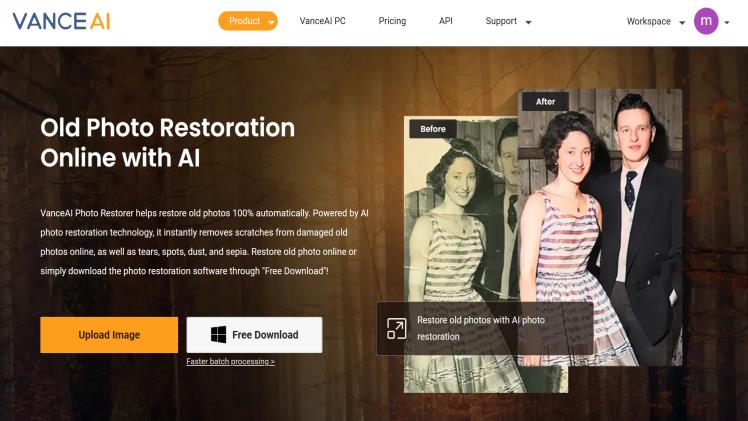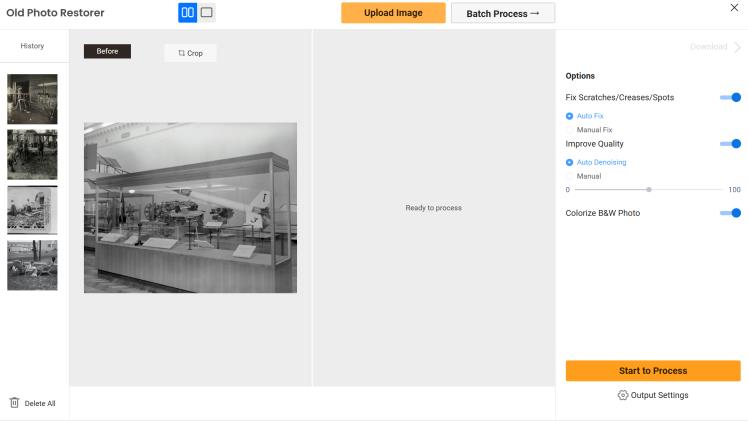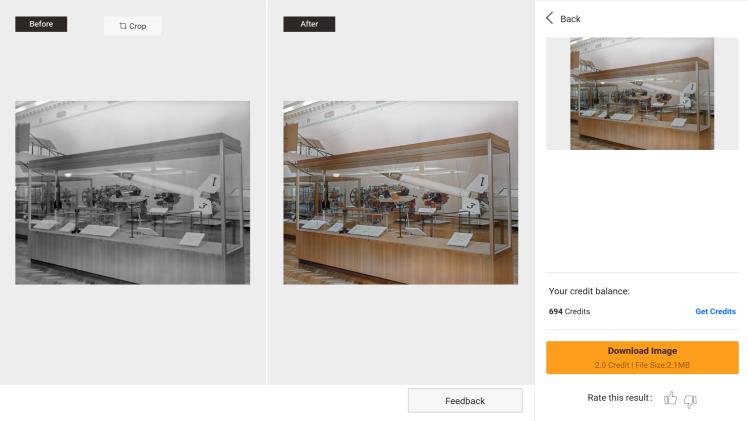History is a treasure trove of stories, insights, and cultural heritage. Historical documents and photographs provide a window into the past, offering invaluable primary sources for research, education, and cultural understanding. However, the passage of time, environmental factors, mishandling, and deterioration threaten to erode these precious artifacts. The need to preserve and digitize historical archives has never been more critical. In this article, we delve into the significance of historical archives, the challenges in their preservation, and the transformative role of AI-powered restoration techniques, particularly through VanceAI Photo Restorer.
Importance of Historical Archives
Historical archives hold immense value as primary sources that shed light on the past. They serve as essential resources for researchers, scholars, educators, and anyone interested in understanding the journey of civilizations, cultures, and societies. These archives offer insights into historical events, societal norms, personal stories, and artistic expressions that have shaped our world. However, the vulnerability of these archives to degradation, fragility, and mishandling raises concerns about their long-term preservation.
A Race Against Time: Preserving Physical Archives
The passage of time is unrelenting, and historical documents and photographs are not immune to its effects. Aging, exposure to light, humidity, and pollutants contribute to the deterioration of these artifacts. Physical archives, including manuscripts, letters, maps, and photographs, are at risk of fading, discoloration, mold growth, and other forms of damage. The challenge of preserving physical archives becomes even more complex due to their fragile nature and limited access, often necessitating controlled environments and careful handling.
Unlocking the Past: Challenges of Analog Archiving
Traditional analog methods of archiving, such as microfilming and photocopying, have been employed to create duplicates of historical documents. While these methods offer a degree of preservation, they do not address the issue of deterioration in the original artifacts. Moreover, retrieving information from analog archives can be time-consuming and require physical presence. These limitations underscore the need for innovative approaches that not only preserve but also enhance accessibility to historical archives.
AI Restoration Techniques Transform Preservation
Preserving historical archives is not just a task; it’s a responsibility that ensures the legacy of our past for future generations. How was it? As technology continues to evolve, embracing AI-powered restoration techniques like VanceAI Photo Restorer becomes an essential step in safeguarding historical documents and photographs. VanceAI Photo Restorer provides powerful colorization to old photos. Take this opportunity to explore the digital restoration process, contributing to the accessibility and longevity of our shared history.
Restoring historical documents and photographs traditionally involved meticulous manual conservation efforts. Conservators would painstakingly clean, repair, and stabilize artifacts to prevent further deterioration. While manual conservation remains crucial, digital restoration techniques have emerged as transformative solutions, ensuring the preservation of historical archives while also enhancing their accessibility.
Digitization: A Gateway to Preservation
Digitization involves the conversion of physical archives into digital formats, ranging from scanned images to fully searchable databases. The advantages of digitization are multifaceted: it allows for easy dissemination, remote access, reduced handling of original artifacts, and enhanced searchability. Researchers and enthusiasts can access digitized archives from across the globe, transcending geographical barriers and enabling collaborative research.
The AI Advantage: VanceAI Photo Restorer
VanceAI Photo Restorer marks a significant leap in the restoration and digitization of historical archives. This revolutionary tool offers a streamlined process to enhance the quality of historical photographs, manuscripts, and other documents. Through AI-powered algorithms, VanceAI Photo Restorer can bring faded images back to life, restore colors, and sharpen details, breathing new life into these artifacts.
Preservation Reinvented: How to Use VanceAI Photo Restorer
Step 1: Upload Your Image

Begin by accessing the VanceAI platform and uploading the historical image or document you intend to restore and digitize. This process is intuitive and user-friendly, allowing users to get started with ease.
Step 2: Select Restoration Options

VanceAI Photo Restorer offers a range of restoration options to cater to different types of artifacts and desired outcomes. Customize the restoration process to suit the specific needs of the historical document or photograph.
Step 3: Review and Download

Once the restoration process is complete, review the enhanced version of your historical artifact. The AI-powered restoration will reveal improved clarity, sharper details, and vibrant colors. Download the restored digital copy for easy access and preservation. Making history into cartoons by AI cartoon generator is a great way to help children learn past times.
Conclusion
The digitization and restoration of historical archives through AI-powered techniques open a new chapter in the preservation of our collective heritage. As we harness the power of technology to restore and enhance artifacts, we ensure that the stories, insights, and memories encapsulated in these archives continue to inspire and educate generations to come. Also becoming a Vtuber by using AI Vtuber Generator to broadcast historical knowledge is also fun. So, seize the opportunity to be a part of this transformative journey and contribute to the ongoing preservation of history.
